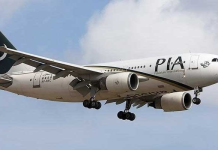The recently held trilateral meeting in Kabul between the foreign ministers of Pakistan, Uzbekistan, and Afghanistan on July 17, 2025 has given renewed impetus to the long-envisioned rail link connecting Uzbekistan to Pakistan via Afghanistan. This high-level dialogue has reaffirmed the commitment of all three nations to enhance regional connectivity through sustainable infrastructure. The rail corridor, if realized, would mark a major breakthrough in efforts to link Central and South Asia economically, culturally, and strategically.
The meeting underscored the transformative potential of the Uzbekistan-Afghanistan-Pakistan (UAP) railway project, which promises to unlock new trade corridors and reduce logistical barriers. As reiterated by the foreign ministers, the project is not just about transportation—it is a strategic vision to integrate economies, connect people, and stabilize the region through shared prosperity.
Central Asia, rich in resources but landlocked, has long searched for viable trade routes to global markets. Pakistan, with its strategic geography and access to the Arabian Sea via Gwadar and Karachi ports, offers an ideal gateway. The UAP rail link could drastically cut cargo transit times and costs, making trade routes more competitive and reliable. For Uzbekistan, known for its exports of cotton, textiles, and precious minerals, and Pakistan, with its strengths in agriculture, pharmaceuticals, and manufacturing, this project opens up significant commercial possibilities.
The trilateral meeting also recognized the project’s potential to complement the China-Pakistan Economic Corridor (CPEC) by extending its influence into Central Asia. A functional rail link from Tashkent through Kabul to Peshawar and onward to Karachi would turn this corridor into a major Eurasian trade artery, attracting investment and supporting economic growth across the region.
Beyond economics, the foreign ministers acknowledged the socio-cultural dividends of such connectivity. Improved rail access would enable educational exchanges, religious tourism, and academic cooperation. It would revive historic ties that date back to the Silk Road era, reinforcing bonds between societies that share centuries of cultural and civilizational heritage.
A major focus of the Kabul meeting was ensuring Afghanistan’s role as a cooperative transit partner. While security and political challenges persist, the Taliban-led government’s participation in the trilateral forum signals its willingness to support regional infrastructure initiatives. The ministers emphasized the importance of a stable and secure Afghanistan for the success of this corridor and agreed to maintain diplomatic and technical engagement to resolve logistical and security hurdles.
International support will be crucial. Countries like China and Russia, both with vested interests in regional integration, could play a significant role by offering technical, financial, and political backing. Similarly, organizations such as the Shanghai Cooperation Organization (SCO) and Economic Cooperation Organization (ECO) should be leveraged to provide a multilateral framework for planning, investment, and oversight.
Pakistan and Uzbekistan have already demonstrated intent by launching direct flights between Islamabad and Tashkent, and now, through this high-level trilateral dialogue, they have signaled readiness to move to the next phase—tangible rail infrastructure development.
The UAP railway is more than just steel tracks; it is a vision of shared progress, peace, and partnership. With sustained commitment, regional cooperation, and international support, this corridor could redefine regional trade dynamics, create jobs, and connect distant communities. The political will displayed in Kabul is a promising start. Now, it must be matched by coordinated, timely, and bold action to turn vision into reality—for the benefit of all in Central and South Asia.

















